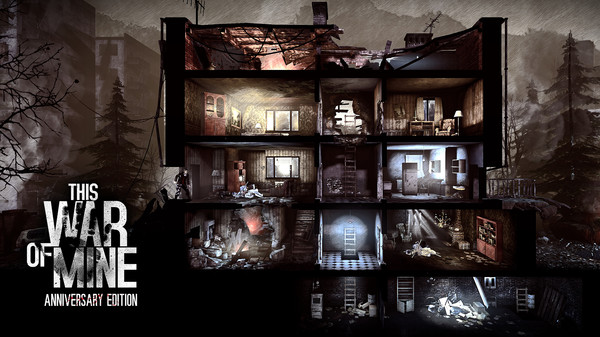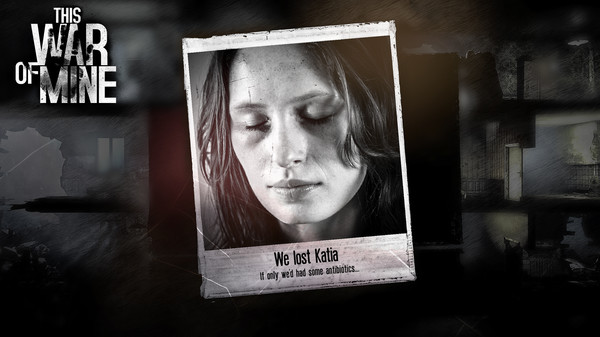Moral gameplay design benefits from extensive background research, external playtesting and iterative design.
In their article, “The Case of This War of Mine: A Production Studies Perspective on Moral Game Design”, Stephanie de Smale, Martin J.L Kors and Alyea M. Sandovar studied the game This War of Mine (2014) by 11 bit studios and concentrated on the moral game design aspects.
This War of Mine is an unconventional wargame as it depicts the lives of civilians amidst a war. The player character is responsible for a group of people that she needs to provide food and shelter for by scavenging and stealing. There is no tutorial to help the player, characters cannot be respawned and there are children amongst the nonplayable characters.
The data for the study was gathered by using a focus group interview, visual methods such as drawings and open-ended questionnaire. The focus group participants were four members of 11 bit studios. The data was analyzed by using a grounded theory informed approach. The interviews were conducted in English and the participants were Polish, so the finer nuances of the answers might have been lost in the translation. Other limitations included that it was a short study and the interviews were done two years after the release of the game, so some of the memories of the design process could have been faded.
The method provided main themes that were divided into two groups: “gamework” and “game design”.
Gamework included aspects of the design culture at 11 bit studios: hidden narratives, creativity and sustainability. There were two hidden narratives in the game culture. One related to the fact that the studio is Polish, so their cultural memory and proximity to Eastern Europe affected to the environment of the game. As the designers were familiar with the buildings, people and the general feel and look of Easter Europe, it was easy to recreate those for the game.
The second hidden narrative was that researching the stories of actual war survivors enacted an emotional impact on the team. The person tasked with researching had to take a break from it, because of the stories were so extreme. Some of the examples were also deemed too violent by the team, even in a fictional game. There was also a rift between creativity and sustainability, as the team wanted to explore the serious theme of war but the game had to also be financially sustainable.
Game design included aspects such as the vision, language of gameplay, iterations and negotiation between seriousness and entertainment. The vision was to provide emotional realism of war from the perspective of a civilian. This was achieved by doing research on the topic and interviewing actual survivors of war. As the designers did not want to misrepresent any known conflict, the war in the game is fictional. The point was to provide a meaningful experience of what it is to be in the midst of war, so there was a constant negotiation between that and entertainment.
The gameplay was seen as a language that provided interactive, engaging experience that was more effective than movies. Emotional realism was achieved through game design elements: inventory was named “our thing”s, children were a part of the game, there was a requirement for the player to form an emotional bond to the characters, the experience of boredom was included and the tutorial was omitted to provide disorientation. Iterative design process and play testing were important aspects in relation to the moral design. The content resulted in emotional numbness in designers, so several external testers were required.
Based on these findings, de Smale and others were able to provide suggestions for the designers of moral gameplay. Firstly, player-centric iterative design is important to the moral design, as the subject matter can desensitize the designers. Secondly, extensive background research related to the subject of the game supports game-world coherence. And finally, designers should be aware of hidden narratives of their work environment, because those narratives can affect the design.
Source:
de Smale, S., Kors, M.J.L. & Sandovar, A.M. 2017. The Case of This War of Mine: A Production Studies Perspective on Moral Game Design. Games and Culture: a journal of interactive media, August 29, 2017
https://doi.org/10.1177/1555412017725996
Pictures: https://store.steampowered.com/app/282070/This_War_of_Mine/


